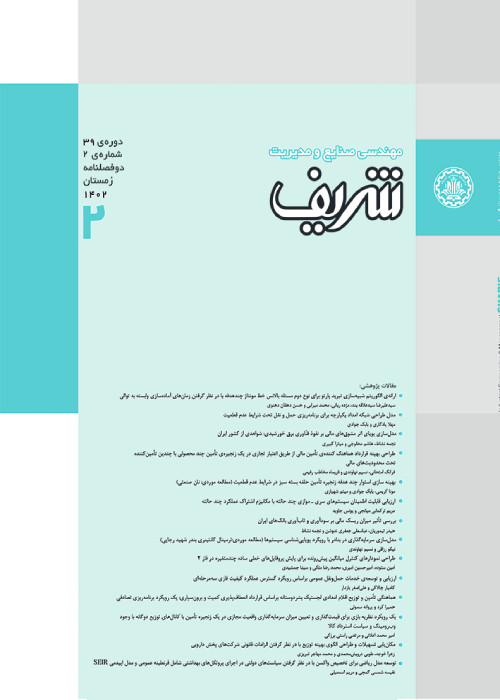A M E T H O D F O R D I S C O N T I N U O U S P R O D U C T I O N P L A N N I N G S Y S T E M S W I T H M U L T I P L E O B J E C T I V E S A N D M U L T I P L E S T A K E H O L D E R S
Author(s):
Abstract:
In any organization, there are many stakeholders, whosepoints of view should be taken into account when planning.The involvement of di
erent stakeholders in thedecision making process is an important feature to beconsidered, not only for interpretation and making decisionsbased on their judgment, but also for their participationin research and the decision making process.A decision is evaluated as a suitable decision when allstakeholders are satis
ed with the
nal decision, whichmeans that the stakeholders should reach a consensuson the decision. Stakeholder participation in the decisionmaking process enhances respect for their opinions,as well as improving the learning process in the organizationand better understanding of the studied system.Involvement of di
erent stakeholders can improve theperception of a problem because of their diverse information,which may be ignored in the presence of justone stakeholder. Therefore, in any planning, it is necessaryto consider all stakeholder objectives to reacha compromise. Stakeholder objectives may be in con-ict with each other, and a production plan based on just one stakeholder, however important he/she may be, may create problems in the organization. To overcome these problems, this paper intends to provide a set of linear programming models for each individual stakeholder, with their objectives, in order to discover whether or not stakeholder viewpoints are identical. If the solutions of the models are the same, then, we can claim there are no major con icts between the stakeholders. Otherwise, it is necessary to aggregate the individual models to obtain a unique model and, therefore, a single solution. To do this, a multi-objective programming model is established, which is an aggregation of individual linear programming models, in order to consider di
erent stakeholder objectives. Solution of the aggregated model, using the LP metric method, can provide the
nal solution for an organization that satis
es stakeholder viewpoints as much as possible. The aim of the paper is to provide a methodology to consider di
erent stakeholder viewpoints, with their objectives, in discontinuous production planning systems. Aggregation of individual stakeholder models to obtain a unique solution has been studied via multi-objective programming. The methodology has been applied to an electrical manufacturing company to show the abilities of the methodology. The results of the study show that company stakeholders are relatively satis
ed with the solutions. However, there is some small dissatisfaction, which may always exist.
Keywords:
Language:
Persian
Published:
Industrial Engineering & Management Sharif, Volume:29 Issue: 2, 2014
Pages:
135 to 144
magiran.com/p1253394
دانلود و مطالعه متن این مقاله با یکی از روشهای زیر امکان پذیر است:
اشتراک شخصی
با عضویت و پرداخت آنلاین حق اشتراک یکساله به مبلغ 1,390,000ريال میتوانید 70 عنوان مطلب دانلود کنید!
اشتراک سازمانی
به کتابخانه دانشگاه یا محل کار خود پیشنهاد کنید تا اشتراک سازمانی این پایگاه را برای دسترسی نامحدود همه کاربران به متن مطالب تهیه نمایند!
توجه!
- حق عضویت دریافتی صرف حمایت از نشریات عضو و نگهداری، تکمیل و توسعه مگیران میشود.
- پرداخت حق اشتراک و دانلود مقالات اجازه بازنشر آن در سایر رسانههای چاپی و دیجیتال را به کاربر نمیدهد.
In order to view content subscription is required
Personal subscription
Subscribe magiran.com for 70 € euros via PayPal and download 70 articles during a year.
Organization subscription
Please contact us to subscribe your university or library for unlimited access!


